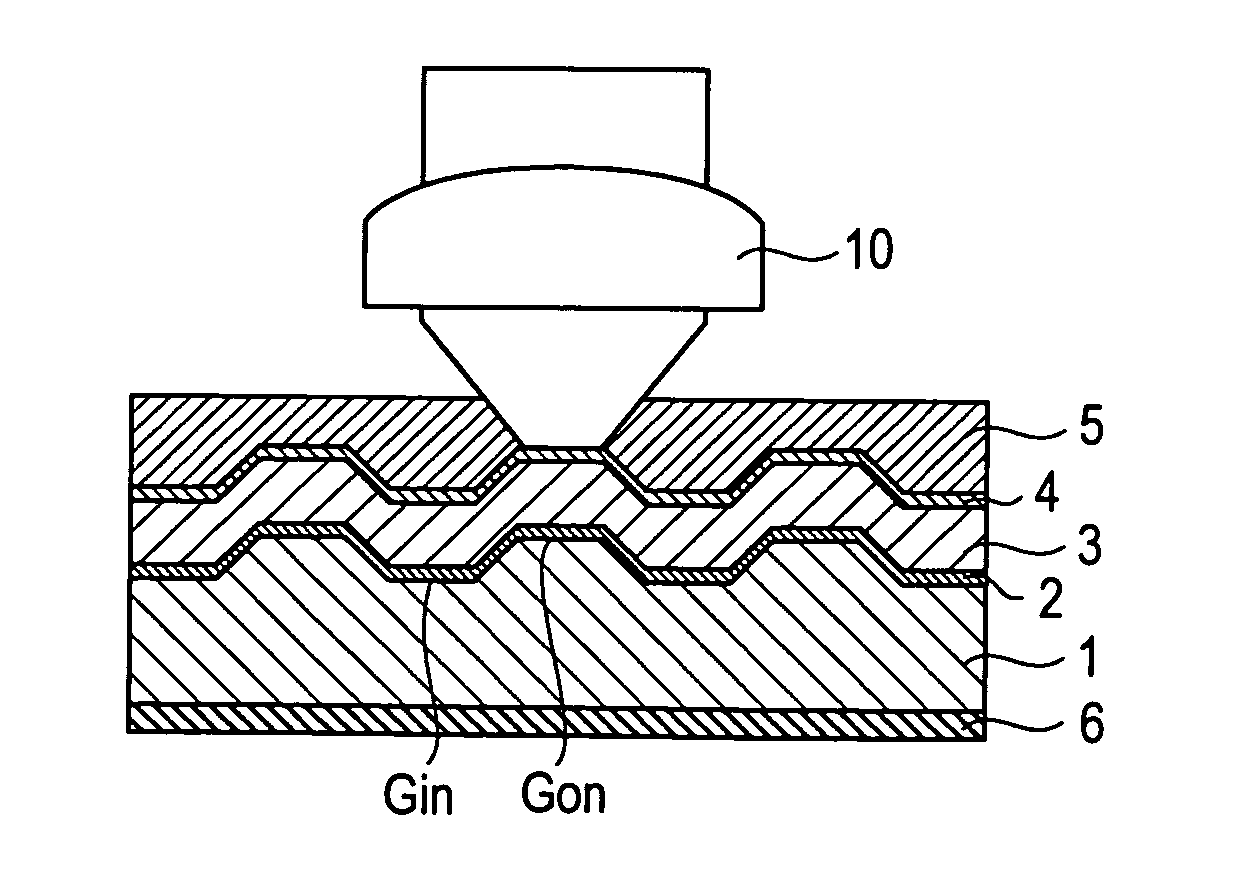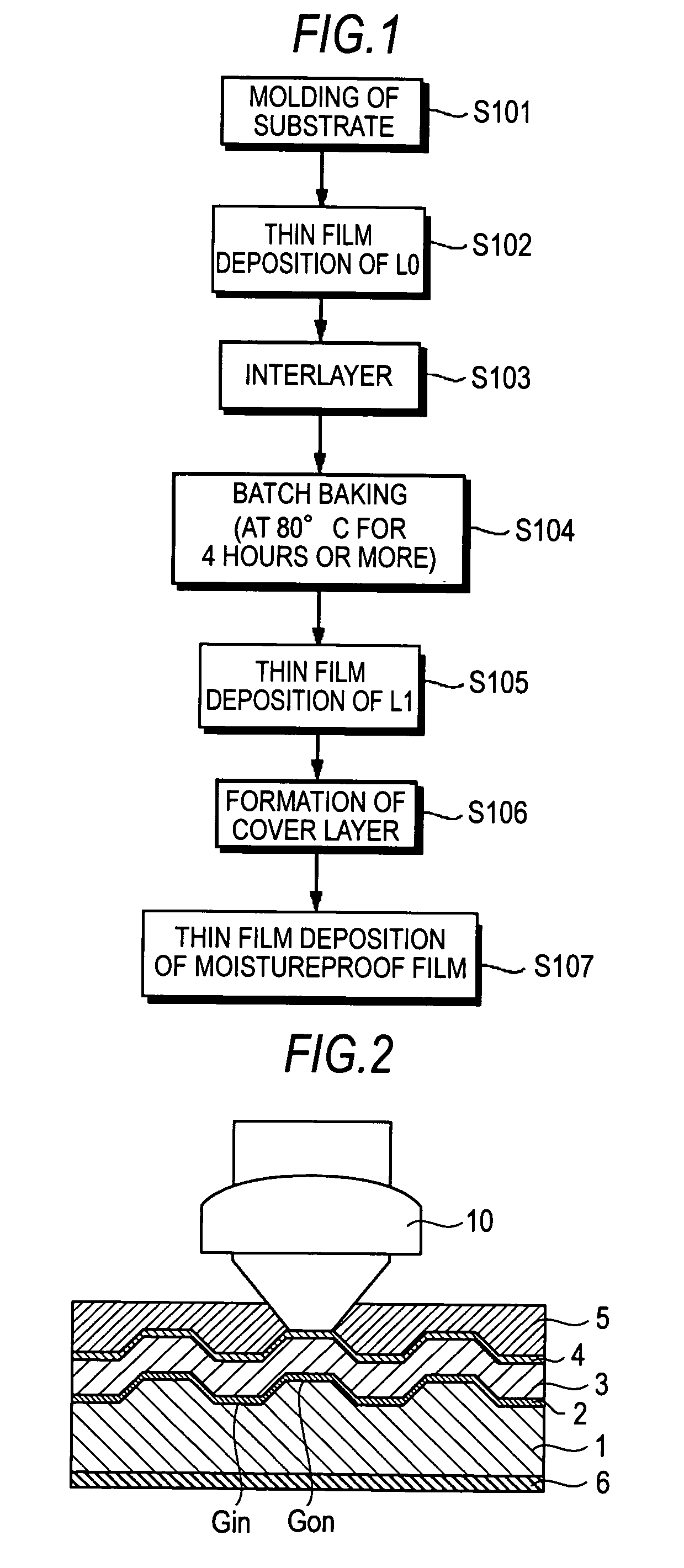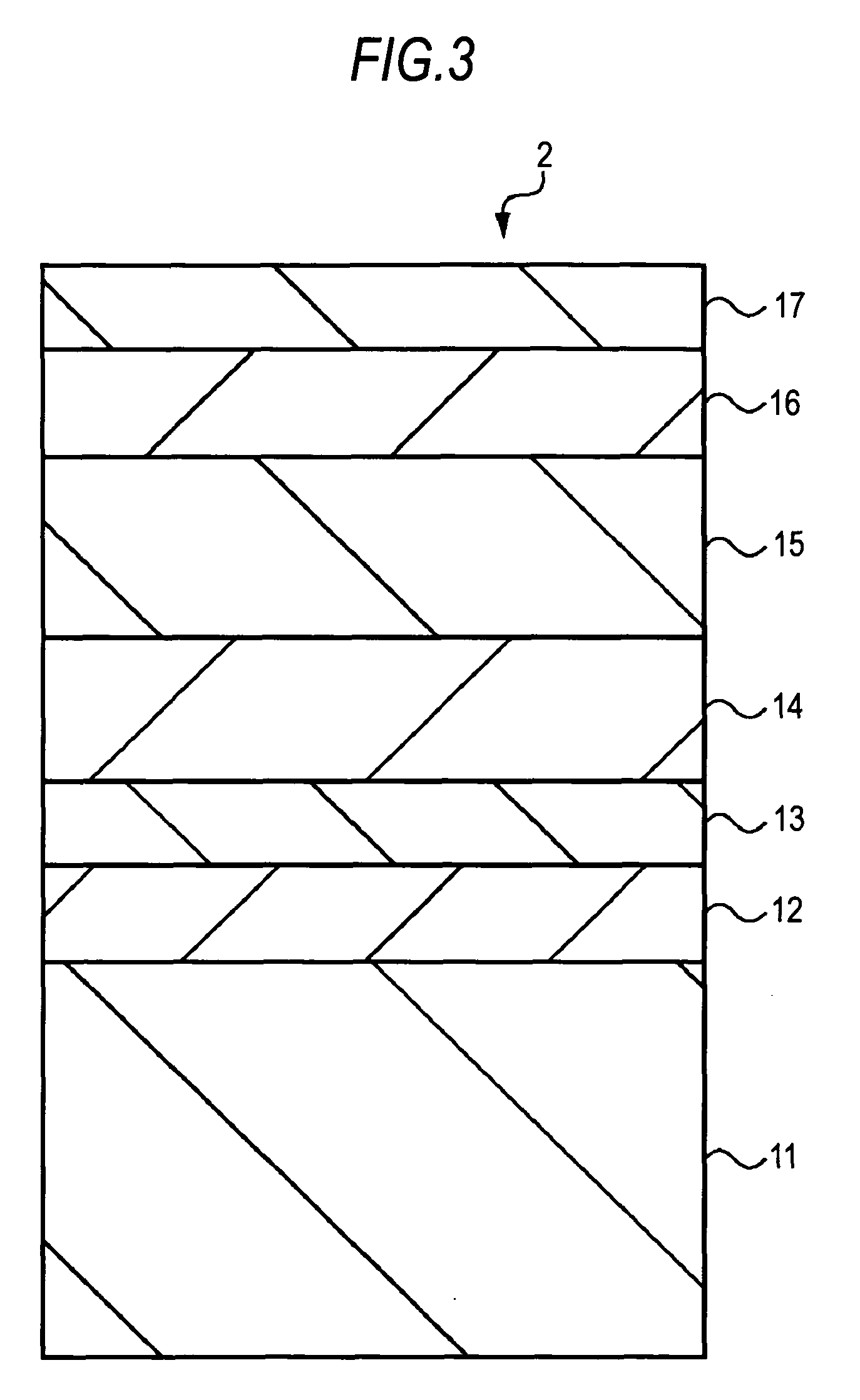Optical recording medium and method for manufacturing the same
a technology of optical recording medium and manufacturing method, which is applied in the direction of photomechanical equipment, instruments, transportation and packaging, etc., can solve the problems of deterioration of recording mark reproduction characteristics, remarkably lowered productivity, and accumulation of thermal damage in the phase, so as to achieve excellent durability against repeated recording, reduce the effect of degassing within the substrate and reducing the amount of deterioration
- Summary
- Abstract
- Description
- Claims
- Application Information
AI Technical Summary
Benefits of technology
Problems solved by technology
Method used
Image
Examples
first embodiment
1. First Embodiment
Configuration of Optical Recording Medium
[0037]FIG. 2 shows a configuration example of an optical recording medium according to the first embodiment of the present invention. This optical recording medium is a rewritable optical recording medium capable of erasing or rewriting data. As shown in FIG. 2, the optical recording medium includes a substrate 1; a first information signal layer (L0 layer) 2, an interlayer 3, a second information signal layer (L1 layer) 4 and a cover layer 5 laminated in this order on one principal surface (first principal surface) of the substrate 1; and a barrier layer 6 laminated on the other principal surface (second principal surface) of the substrate. Hereinafter, one principal surface of the substrate 1 on which the first information signal layer 2 and the second information signal layer 4 are laminated is properly referred to as “signal surface”; and the other principal surface on the opposite side thereto is properly referred to a...
second embodiment
2. Second Embodiment
[0082]FIG. 8 shows a configuration example of the optical recording medium according to the second embodiment of the present invention. As shown in FIG. 8, the optical recording medium according to the second embodiment is different from that of the first embodiment in the point that it includes a single-layer information signal layer 7. The same symbols are given to the same portions as those in the foregoing first embodiment, and their explanations are omitted. As the information signal layer 7, for example, the same layer as the first information signal layer 2 in the first embodiment can be used. In this second embodiment, the barrier layer 6 is, for example, formed after the step of molding the substrate 1 but before the step of forming the information signal layer 7.
[0083]According to this second embodiment, the durability against repeated recording can be enhanced in a single-layer rewritable optical recording medium.
example 1
[0085]First of all, a polycarbonate substrate having a diameter φ of 120 mm and a thickness of 1.1 mm and provided with grooves having a track pitch of 0.32 μm was molded by an injection molding apparatus. This polycarbonate substrate is in conformity with Blu-ray Disc Rewritable Format, Part 1: Basic Format Specifications Version 2.1. Subsequently, the molded substrate was conveyed into a first single sputtering apparatus (DVD SPRINTER, manufactured by Oerlikon) from the injection molding apparatus. Subsequently, a reflecting layer, a second dielectric layer, a first dielectric layer, a phase-change recording layer, a first dielectric layer and a second dielectric layer each having the following composition and film thickness were laminated in this order on the surface of the substrate in a magnetron sputtering mode. There was thus formed a first information signal layer (L0 layer) on the surface of the substrate.
[0086]Second dielectric layer: SiN, 40 nm
[0087]First dielectric layer...
PUM
| Property | Measurement | Unit |
|---|---|---|
| area | aaaaa | aaaaa |
| dew point | aaaaa | aaaaa |
| temperature | aaaaa | aaaaa |
Abstract
Description
Claims
Application Information
 Login to View More
Login to View More - R&D
- Intellectual Property
- Life Sciences
- Materials
- Tech Scout
- Unparalleled Data Quality
- Higher Quality Content
- 60% Fewer Hallucinations
Browse by: Latest US Patents, China's latest patents, Technical Efficacy Thesaurus, Application Domain, Technology Topic, Popular Technical Reports.
© 2025 PatSnap. All rights reserved.Legal|Privacy policy|Modern Slavery Act Transparency Statement|Sitemap|About US| Contact US: help@patsnap.com



